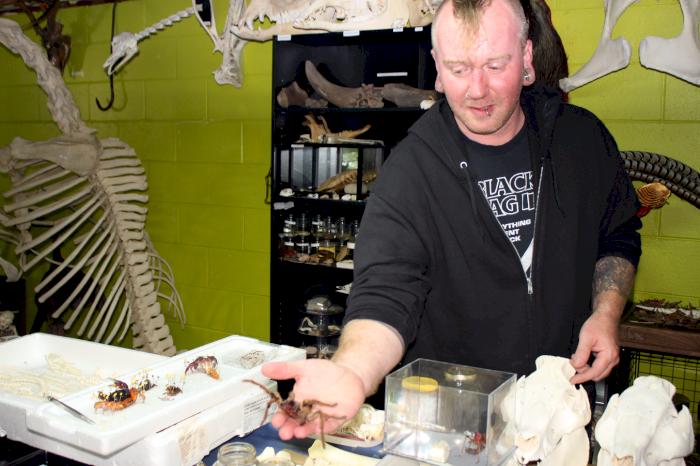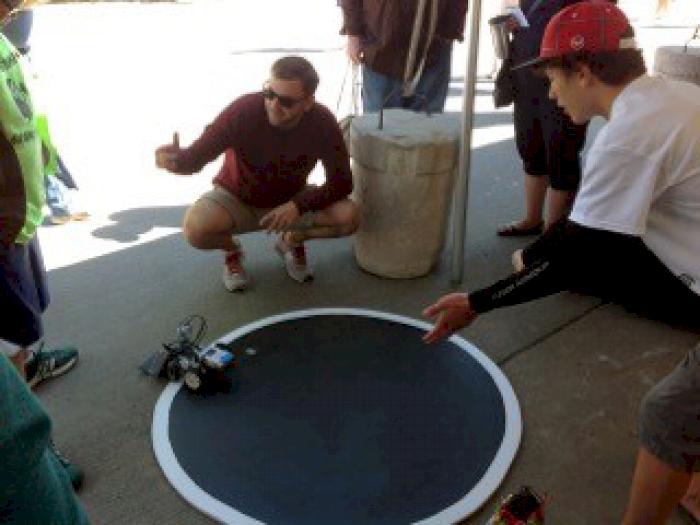STEM in DSM: Taxidermist and exotic-animal owner shows off his unique collection
- Monday December 14 2015
- STEM in DSM
A Burmese python suspends from the ceiling. Half a horse skeleton hangs from a chain, its shoulder blade and back leg still missing. Black, plastic trays of bones occupy the pool table. Green felt sporadically peeks out, revealing the room’s past life as a Chicago Cubs fan cave.
Today the basement is part zoo, part taxidermy workshop and part tropical plant paradise. For its owner, Gregg Bensink of Des Moines, creativity thrives here in unexpected ways.
His latest challenge is perhaps tougher than identifying, sorting and articulating the itty-bitty bones of a sugar glider or waiting patiently for rhino dung to thaw: “Every time I have an idea, I think, ‘Where am I gonna put it?’”
Painted neon green, Bensink’s haven is a bizarre conglomeration of places and life stages, as live plants and exotic animals from around the world coexist among skeletons and skins.
A lifelong nature enthusiast, Bensink boasts a network of zoos, exotic-pet owners and taxidermists who reach out to him when an animal passes away.
“There’s enough people I know who when something dies, they’ll give it to me if they’re not too attached to it,” he said.
When a new specimen arrives at his home, it’s a messy, gory welcome, fueled by tweezers, patience and Google as Bensink collects and cleans each bone.
He’s working on a lion right now and plans to mount its head and front claws in a fierce, ready-to-pounce pose.
Specimens rarely wind up in a single section of his basement menagerie. One snake skeleton twists its way up a tree, its dried skin on display a few feet away. Even in death, the snake has taken on new form and movement, its smooth slithering mechanism exposed in each little bone.
When the lion is fully articulated — that’s taxidermy lingo for a connected, complete specimen — it also will occupy multiple spaces in Bensink’s basement. The claws will join a glass case of big-cat specimens. A square of its coat will join a hanging mosaic of fur, hair and fleece on the wall of his workshop.
“You know when you go to Lowe’s or Home Depot or a hardware store, they have all the paint colors in a giant book?” Bensink said. “I thought, ‘I should do that with fur.’ I have grizzly bear and giraffe and Cape buffalo and zebra and mountain goat and alpaca. That’s Angora goat, and this is grizzly bear.”
Bensink’s taxidermy collection isn’t limited to large specimens. One homemade display features three grasshoppers and a beetle relaxing around a miniature table complete with tiny bottles. He plans to complete the project with insect-sized playing cards.
His specimens challenge traditional notions of life, death and dominance, inviting the past and present to interact in a space that is simultaneously jarring and beautiful. Bensink playfully challenges the human world, too.
One project features grasshoppers guiding tiny models of men and women on leashes in the grass. His title? “It’s a Human Park.”
Take a virtual tour of Bensink's basement museum.


